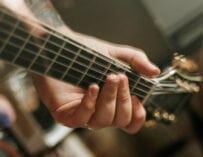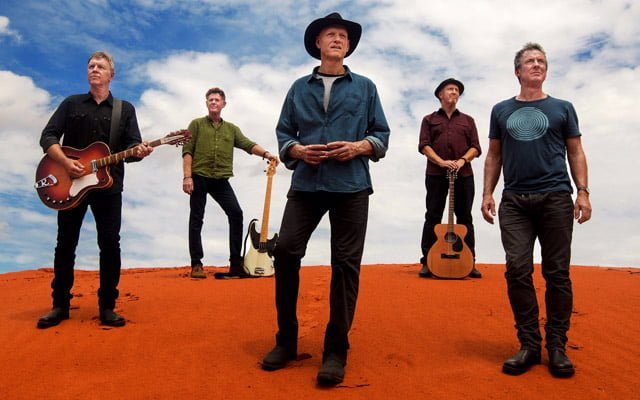
Almost all chords in popular songwriting are constructed using triads. Jack Jennings explains what they are and how they work
 s you probably already know, the word ‘tri’ relates to the number 3, and so it follows that the main aspect that defines these chords is that they are a combination of three notes. The next and most crucial point is the relationship between the notes known as intervals. The interval used to construct the chord is called a 3rd. The meaning of a 3rd in music is quite literal, for example notes 1 and 3 of a scale are a third away from each other. In the same way, 1 and 4 are a fourth away from each other.
s you probably already know, the word ‘tri’ relates to the number 3, and so it follows that the main aspect that defines these chords is that they are a combination of three notes. The next and most crucial point is the relationship between the notes known as intervals. The interval used to construct the chord is called a 3rd. The meaning of a 3rd in music is quite literal, for example notes 1 and 3 of a scale are a third away from each other. In the same way, 1 and 4 are a fourth away from each other.To explain this, let’s look at a triad using the notes of a major scale in C:
C D E F G A B
To form a triad from these notes, we take the first note being C and then combine it with the note a 3rd higher, to find E. To find the next note, we move up a 3rd from E to find G. This makes a triad because it has three notes with the interval of a 3rd between them.
As you can see, notes C, E and G are numbers 1, 3 and 5 of the scale. This is the formula for a triad. In effect, it’s simply taking a starting note and then creating a harmony by skipping one note to use the next in the scale (e.g. starting on 1 and skipping 2 to find 3, then skipping 4 to use 5).
Using this approach, a triad could be constructed starting on any note of the scale. Here is an example of starting on the 2nd note D:
C D E F G A B
This chord uses notes D, F and A. In this case, we have started with D and moved to F because its a 3rd higher (as we did with C to E). Then A was used to find the 3rd note above F. Although the notes relate to numbers 2, 4 and 6 of the C major scale, once they are made into a chord, they are referred to as notes 1, 3 and 5 of a ‘triad’.
Major and Minor
So 1, 3 and 5 make up the triad, but what makes a chord sound different is the 3 becoming a major or minor.
Lets look at a D major and minor chord and see why the minor chord fits with C (the parent scale). You may recognize the chord shapes but look at the notes written in each circle…


You will notice that D major uses an F# whereas D minor uses an F natural. When you match this up with the C major scale we used to make the triad, you can see that F is used rather than F#.
Effectively this means D minor will gel well with C major, whereas D major will create a more unusual sound because it’s out of the C major key. Most musicians will naturally go for chords that are in the same key, by the pure gravity and nature of playing by ear.
So to make a chord major or minor depends on the position of the 3rd. In a major chord its simply called the ‘3rd’ and in minor chords its known as the ‘b3rd’ (flat 3rd).

In this diagram we see how the ‘b3rd/minor 3rd’ is found three frets away on the 2nd string or two frets lower on the 1st string. This forms an interval of three semitones away from the root.
The major 3rd is found four frets away on the 2nd string or one fret lower on the 1st string. This forms an interval of two tones from the root note.
To see how this works for other chords have a look at the examples below of more Majors and Minors based are same root note. You will notice the Minor 3rd is always one fret lower than the Major 3rd.




 Jack Jennings offers songwriting workshops in Bath and Bristol, where he teaches in-house for well established music centres. He is also a co-founder of NightTrain, who run blues guitar courses/jams, and Raag School, a foundation for learning Indian classical music on any instrument.
Jack Jennings offers songwriting workshops in Bath and Bristol, where he teaches in-house for well established music centres. He is also a co-founder of NightTrain, who run blues guitar courses/jams, and Raag School, a foundation for learning Indian classical music on any instrument.
For more information visit www.guitarlessonsbath.net
































Related Articles